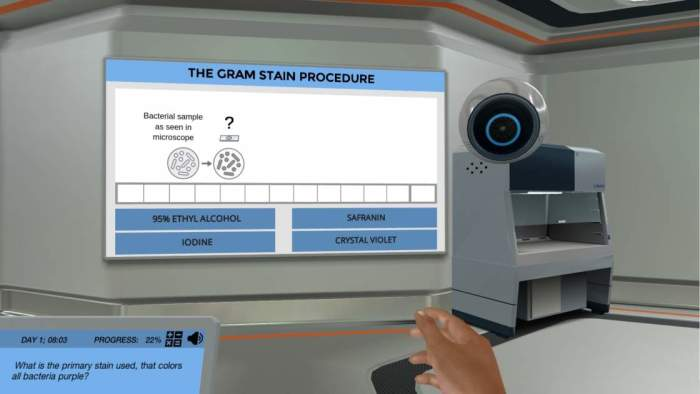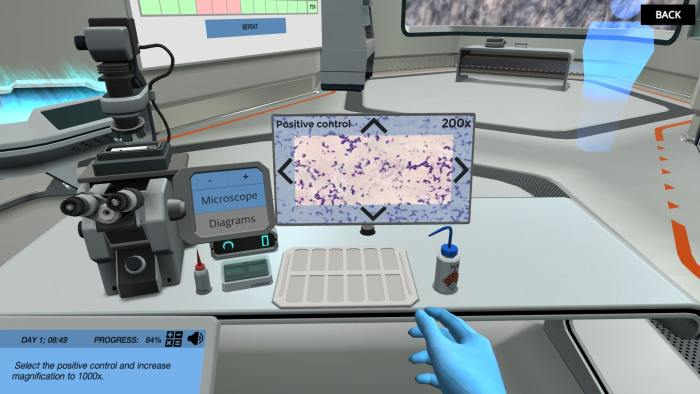
Gram staining is a fundamental technique in microbiology that differentiates bacteria into two major groups: Gram-positive and Gram-negative. Teaching this essential laboratory skill can be challenging, as it involves both theoretical knowledge and practical application. To make the learning process engaging and exciting, we have compiled five creative ways to teach Gram staining. These methods will captivate your students' interest and deepen their understanding of this vital microbiological technique. Let's explore them together!
One of the most effective ways to introduce Gram staining is through interactive demonstrations. Instead of relying solely on textbooks and lectures, bring the laboratory experience into the classroom.
Set up a small-scale Gram staining demonstration using prepared slides or bacterial cultures. Walk students through the step-by-step process, explaining the significance of each staining agent and the structural differences between Gram-positive and Gram-negative bacteria. By observing the staining procedure firsthand, students will gain a clearer understanding of the technique.
Turn Gram staining into an exciting game to engage your students' competitive spirit. Divide the class into teams and challenge them to complete the Gram staining procedure accurately and efficiently. Provide each team with a set of bacterial samples and all the necessary staining materials. Set a time limit and award points based on the correctness and speed of their results. This gamified approach not only adds an element of fun but also encourages teamwork, problem-solving, and attention to detail.
Alternatively, you can use virtual lab simulations like Gram Stain: Test yourself in Gram Stain Procedure from Labster. Here, students can familiarize themselves with the basics of Gram staining before doing it in a real lab. The virtual lab will walk them through the process, facilitating mastery of the topic.

Incorporate technology into your lessons by using online quizzes, videos, animations, and virtual simulations to teach Gram staining. These technology-aided teaching tools can help students master the crucial concepts behind this topic before doing the actual experiments in the lab.
Online platforms, such as Labster’s Gram Stain: How stains and counterstains work virtual lab, offer interactive simulations that allow students to practice Gram staining in a risk-free virtual environment. These simulations provide a realistic laboratory experience, complete with sample preparation, staining procedures, and microscopic observation.
By immersing students in a virtual lab, you can help them develop the necessary skills and confidence before stepping into a physical laboratory.

Discover Labster's Gram Stain virtual lab today!
Gram staining is a fundamental technique used in various scientific disciplines. Take the opportunity to inspire students by introducing them to career paths related to microbiology and laboratory science.
Invite professionals from clinical laboratories, research institutions, or industry to share their experiences and explain how Gram staining is applied in their work. Medical professionals, like medical laboratory scientists, nurses, and medical doctors also benefit from a good grasp of Gram staining.
Introducing the diverse opportunities available in these fields can motivate students to pursue careers in microbiology and related disciplines.
To make Gram staining more meaningful, connect the technique to its real-world applications. Discuss how Gram staining plays a crucial role in healthcare, aiding in the diagnosis and treatment of bacterial infections. Mention how the technique helps doctors prescribe the right antibiotics to patients, depending on whether the bacteria that infected them is Gram-positive or Gram-negative.
Also, you can explore its importance in environmental monitoring. Gram staining is useful in identifying microbial contaminants in food production or water quality assessment. It can also tell environmental scientists if the bacteria present in an environment are resistant to stressors like desiccation.
By highlighting the practical applications of Gram staining, students can understand its relevance in addressing real-world challenges and its impact on society.
Teaching Gram staining can be a fascinating journey that instills essential laboratory skills and cultivates a deeper understanding of microbiology. The key is to be creative in how you teach this crucial topic. You can use technology-aided teaching tools, for one, to increase students’ engagement with the topic. Introducing possible career paths and real-world applications also increases their interest. Remember to foster a hands-on and inquiry-based learning environment. Encourage students to explore, question, and discover the wonders of microbiology.
Try our free 30-day All Access Educator's Pass today and teach with the Gram Staining simulations alongside 300+ other virtual labs!

Labster helps universities and high schools enhance student success in STEM.
Request DemoRequest a demo to discover how Labster helps high schools and universities enhance student success.
Request Demo